Growing in raised beds can be helpful if you’re trying to keep your harvests from critters and foragers (aka invaders) that roam through your garden when you’re not around. This morning I spent some time drilling holes in the bottom of two plastic whiskey barrels and two galvanized metal bins to get them ready for growing sweet potatoes. These containers aren’t as deep as I would like them to be for sweet potatoes, but they do have some depth to them, plus they’re wide so I’m willing to take the chance. Personally, I’ll take a chance at growing vegetables and herbs in just about anything, as long as it’s a food safe container and I can add drainage holes, if it doesn’t already have them. I already bought the soil and had all the supplies ready, so the entire process only took about 2 hours, from start to finish.
Before I get started with filling up the containers, I think long and hard about what I’m actually going to grow in them and where I’m going to place them in the yard. To help me figure this out, I refer to what I call the 4Rs for Starting Off Right: the right plant, in the right container, with the right nutrients, in the right place. For example, if you have a plant that requires full sun, then don’t plant it in an area that is shady; likewise, don’t plant carrots in a shallow container. It seems like pretty basic information and everyone should know this, but I still had to at least mention it because most plants fail simply because they were placed in an environment that wasn’t suitable for them to grow. If you want to give whatever you’re planting a fighting chance, you can’t skip this step.


Do use bricks to give your raised bed more space to let the water drain out. You can also add rocks to the bottom to allow for even more drainage. A couple branches will add organic matter and also help to keep the water flowing. It really doesn’t matter if you add the rocks or twigs first, because the rocks will fall through to the bottom anyway, but I usually add the rocks first.

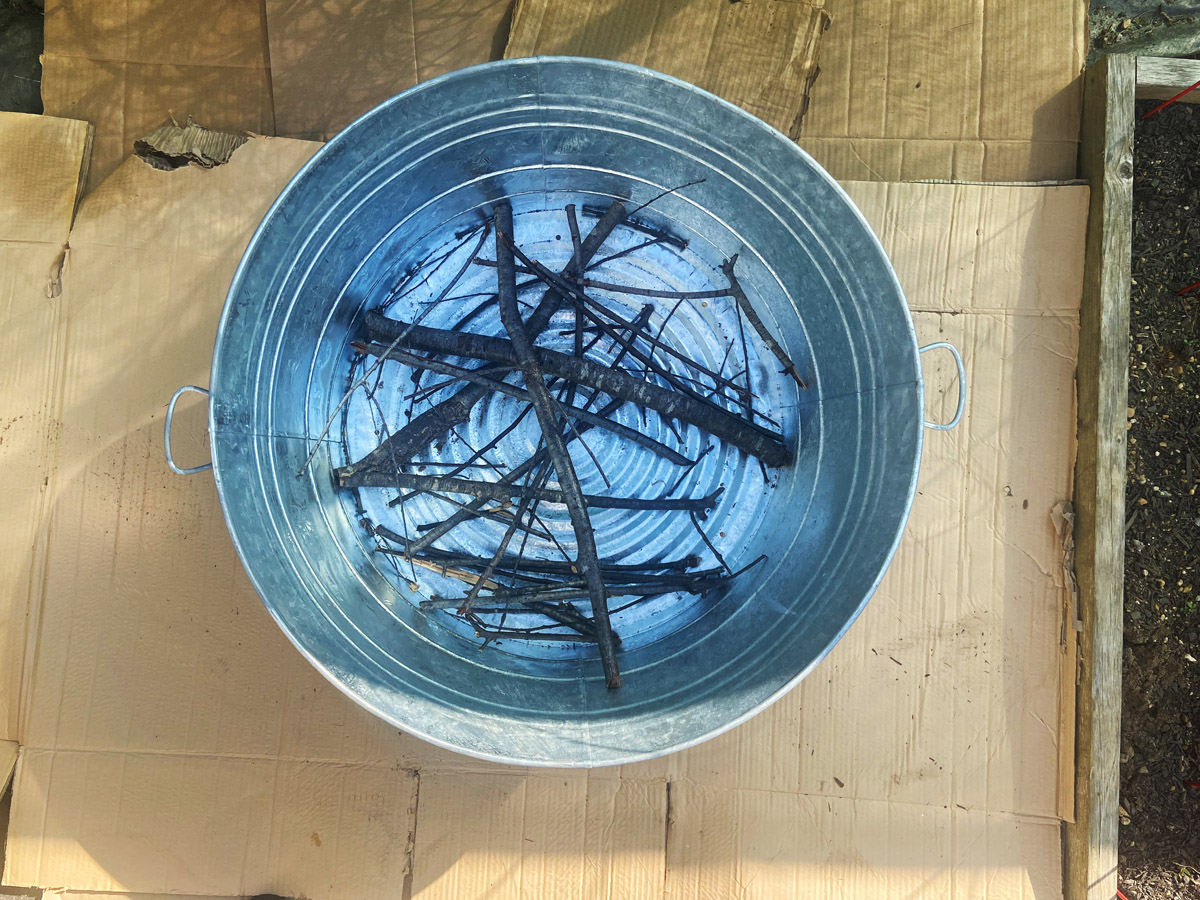
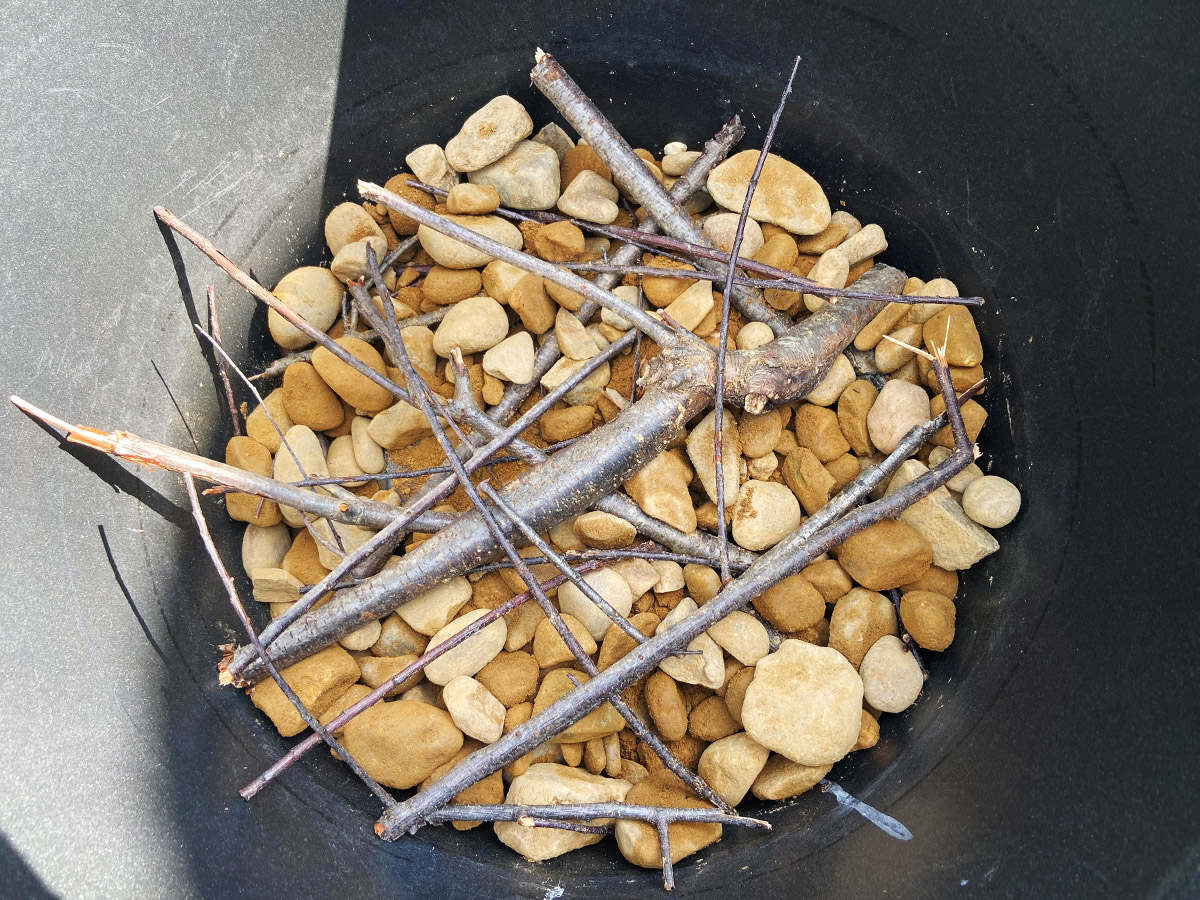
DRAINAGE IS VERY IMPORTANT! When I first started gardening, I’d just dump in dirt and start planting, but lots of trial and error has taught me better over the years. When you fill a large container with only dirt, you risk the soil becoming compacted and poor drainage/soggy soil can become an issue over time. In smaller containers though, I can get away with using all soil, but I still put rocks in the bottom. The governing factor is the 4Rs. Most plants don’t like wet feet, so the amount of moisture the soil retains and drains is one of my primary concerns when finding an appropriate home for plants in the garden.


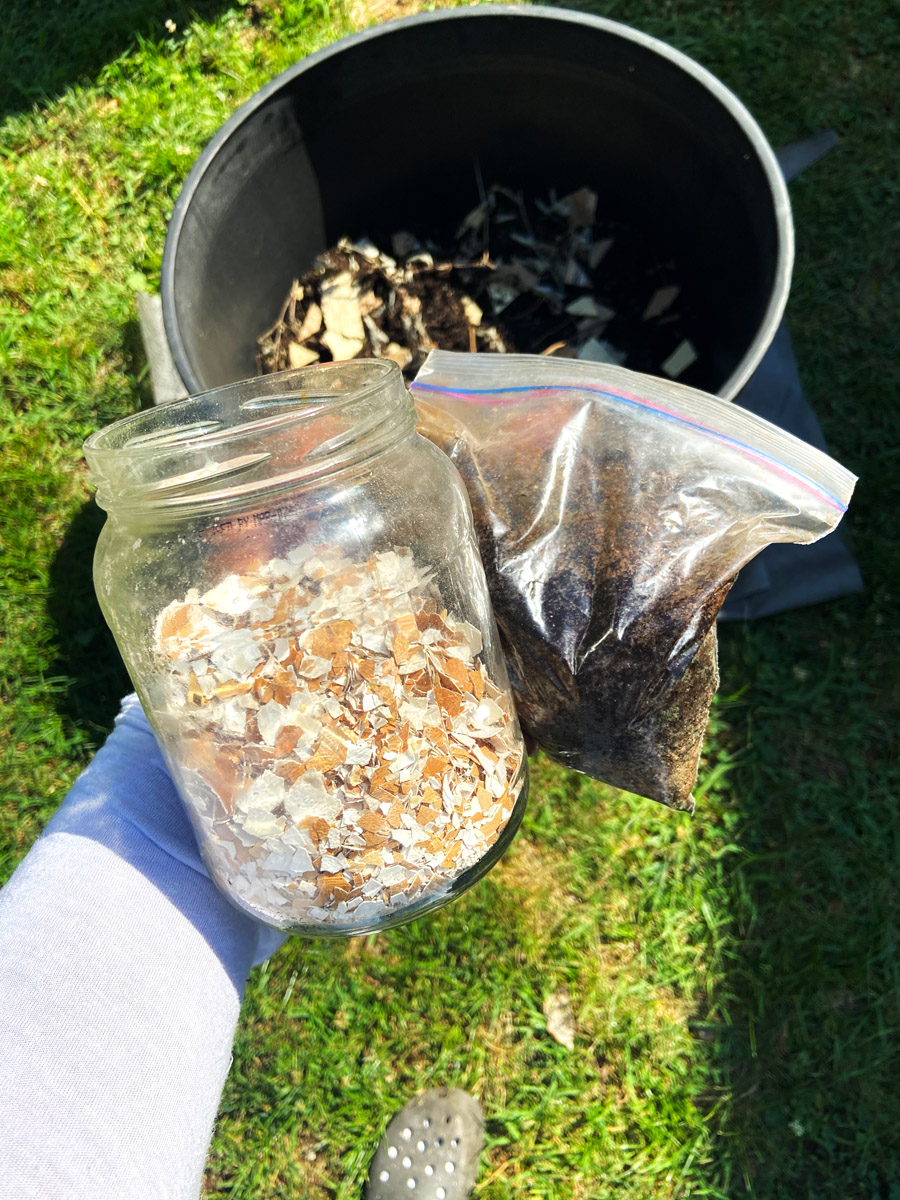
After making sure that I have good drainage, I can move forward with adding in DISEASE FREE organics: ie, twigs/branches, leaves, tea bags, coffee grounds, eggs shells, grass clippings and food scraps. Cardboard is a great filler as well and as you can see in some of the photos, I also use it to block weeds.


Cardboard has many useful purposes in gardening and I’m always on the hunt for free cardboard to use in my garden spaces.

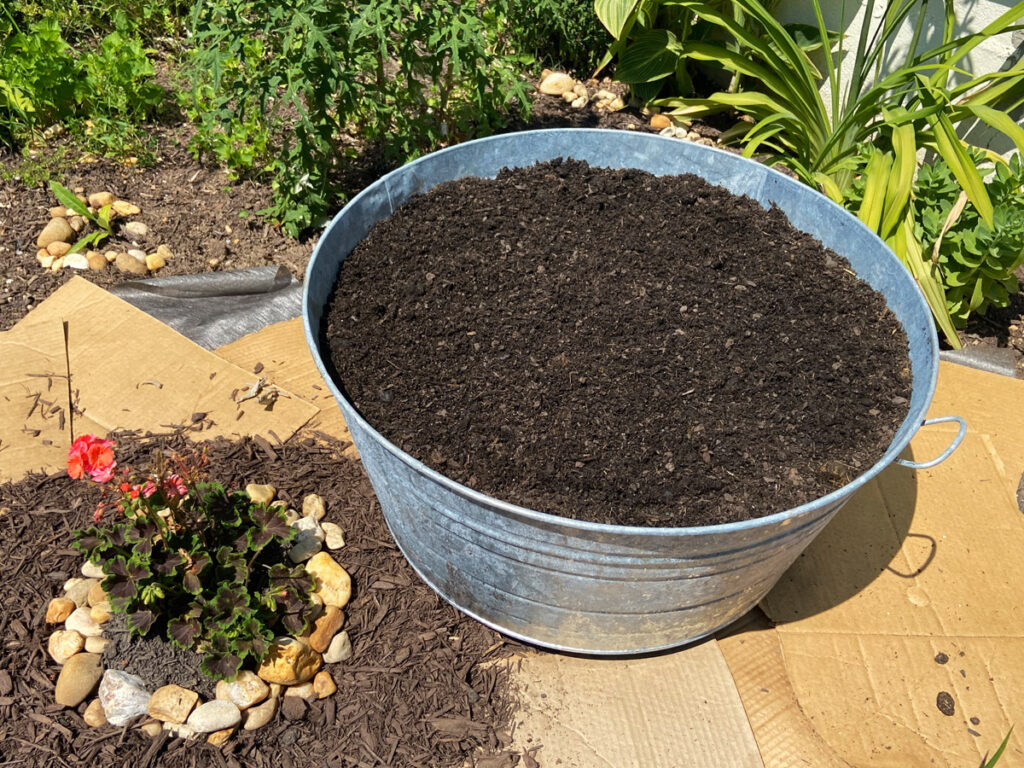
Once I’m done loading it up with a nice mix of brown/green organics and mineral scraps, I add in the dirt and compost and bring it just under the fill line.
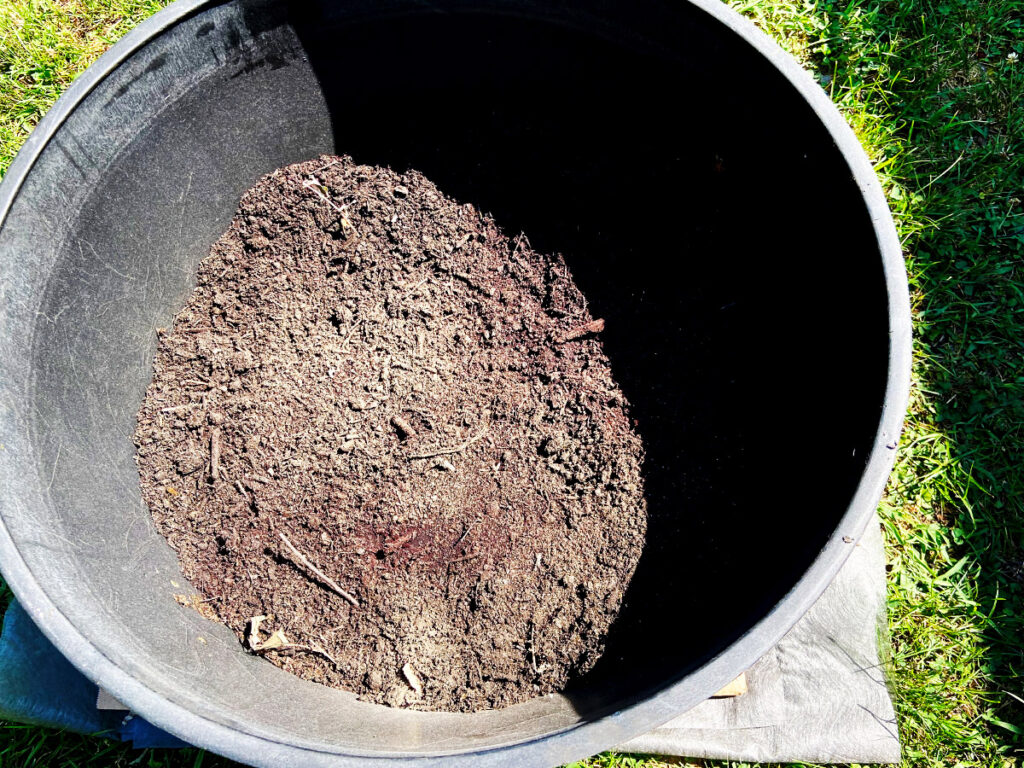
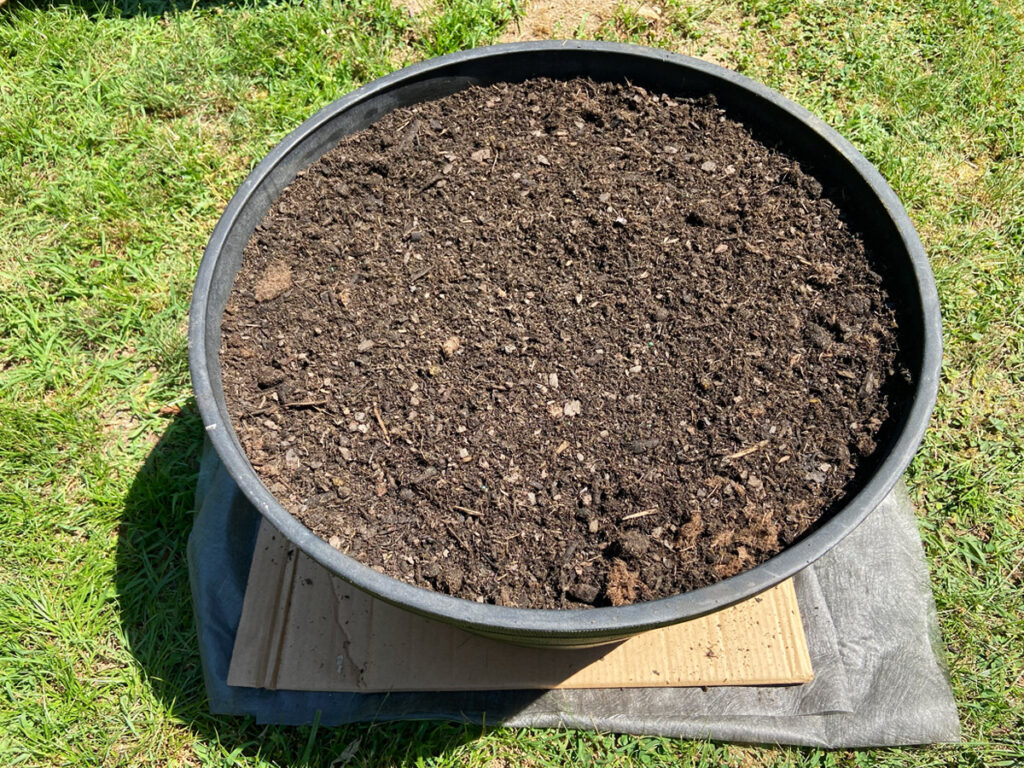

This time I used soil that I bought from Lowe’s Home Improvement store.

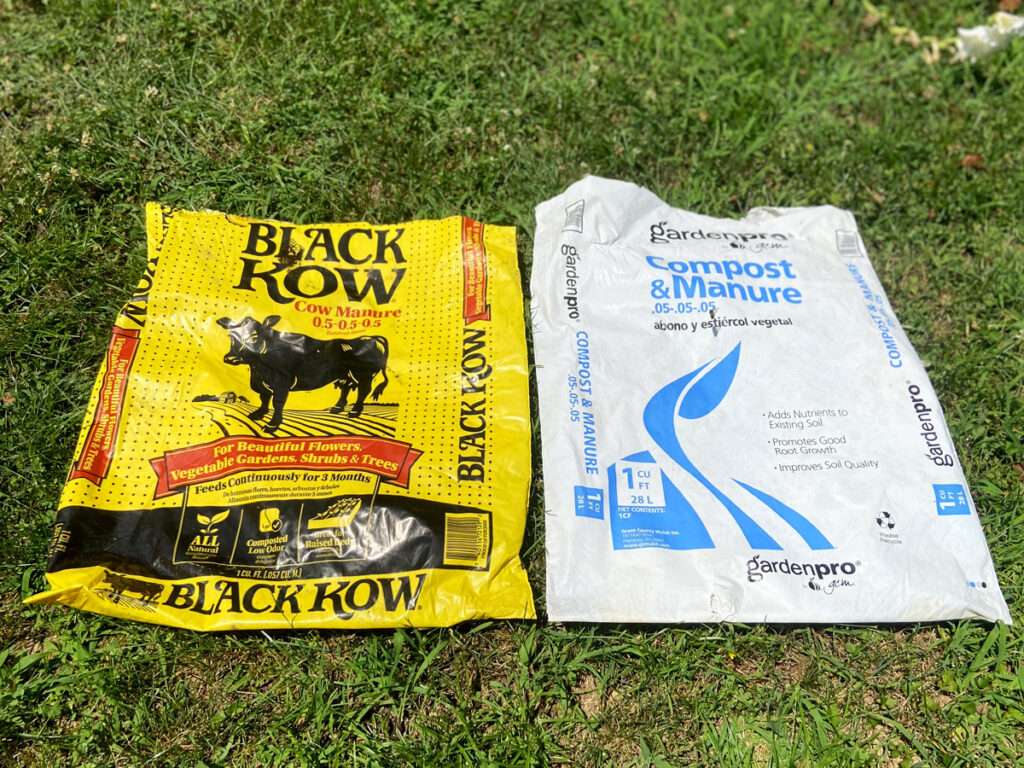
Now it’s time to add in the sweet potatoes. I was given some sweet potato plants went I went to visit with my Husband’s family one summer evening. They live deeper south in Maryland than we do and have a lot more land to grow on. I really enjoy the times I get to hang out down there with them because I get to explore the land and animals, plus forage for different plants to transfer into my gardens. This particular time I lucked out though because I came at a time when they were getting ready to put down sweet potatoes. Of course I’m super nosey and killing them with questions, so they gave me a handful to take home and grow for myself. I haven’t attempted to grow sweet potatoes as yet, so this was quite a score!


All my focus is on the roots when I’m adding plants to new soil. First, I ensure that the plant itself has a healthy root system. Then I think about whether or not I should it. Next, I prepare an area in the soil by digging a hole to match the root shape and size, at the depth appropriate for the plant.

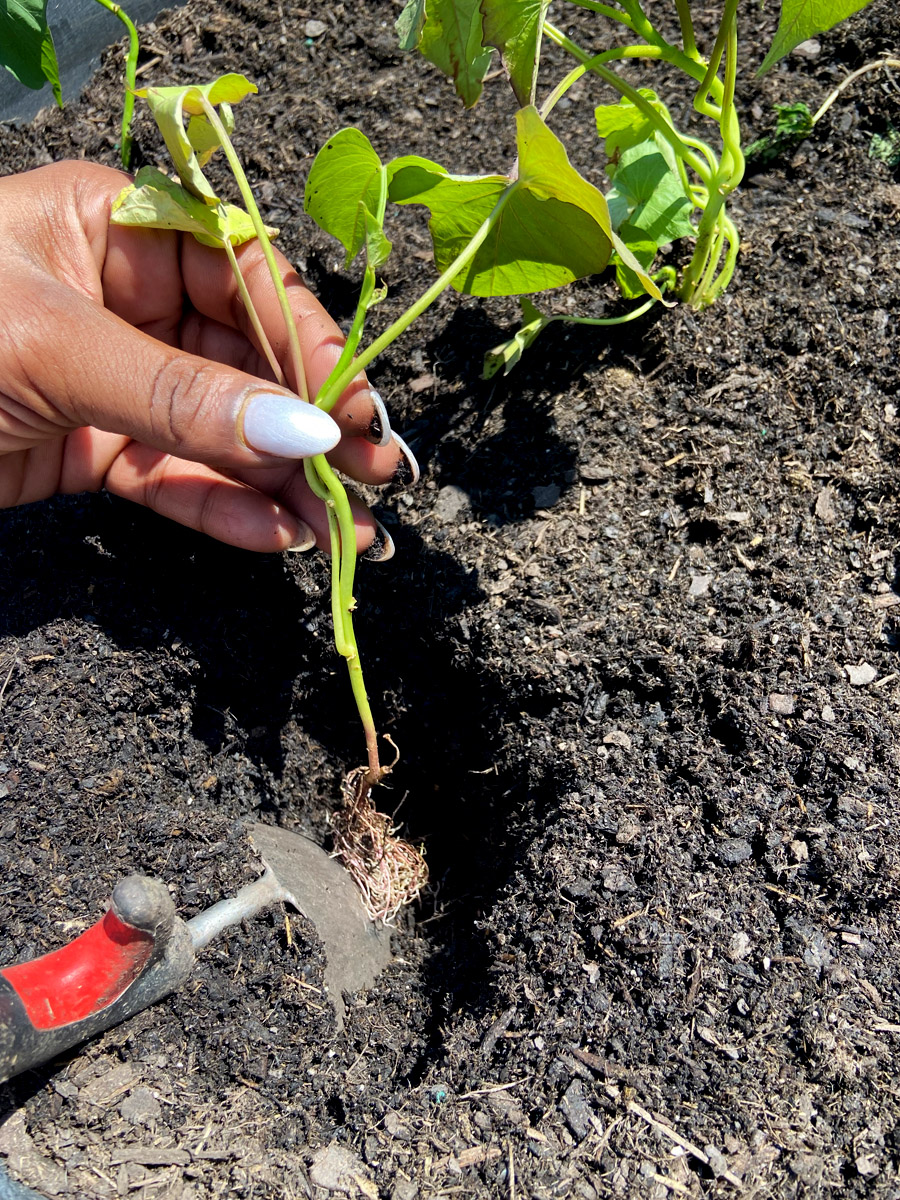
I planted these pretty late in the 2022 grow season, so I’m not going to try to harvest anything from these bins this summer. I’m going to just let them grow through the fall/winter and attempt my first harvest of sweet potatoes in summer 2023.

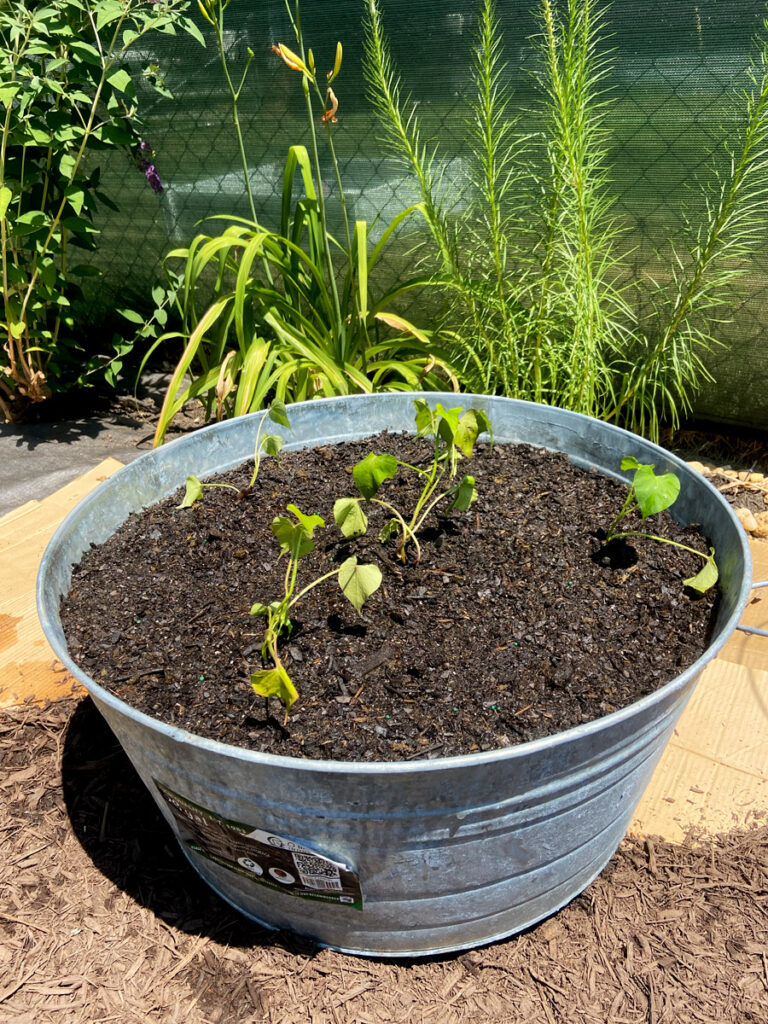
I don’t have any sweet potatoes currently and when it comes to self-sustainability, these are a MUST HAVE in my book, so I really hope these come through!

I won’t be harvesting any sweet potatoes to eat for quite some time, but what a pleasant surprise to see pretty, delicate looking flowers blooming from the vines a few weeks later.
